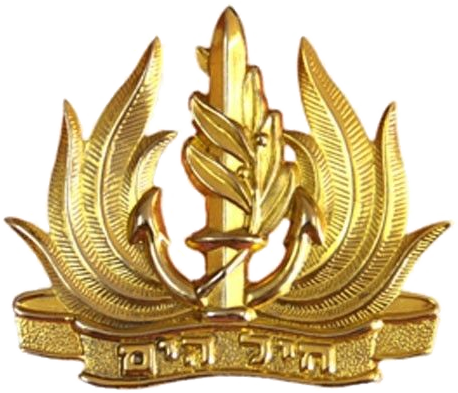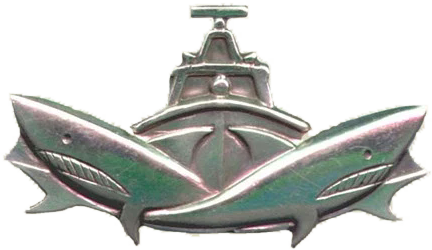Iran, operating from Syria, will destroy Europe and North America, Israel National News, Dr. Mordechai Kedar, August 27, 2017
(In most places where the American military is currently involved, Muslims are fighting other Muslims. If Israel is put at risk it is quite likely that America will intervene to help her, if an anti-Israel government does not return to power. — DM)
This ethnic cleansing is the Ayatollah’s dream come true, the dream that sees a Shiite crescent drawn from Iran through Iraq and Syria to Lebanon and the Mediterranean Sea. This will cover the eastern Arab world from the north, while the war in Yemen is being fought in order to create a parallel southern crescent, entrapping Saudi Arabia and Jordan between the two. With the help of Allah, both those countries and Israel, the Small Satan, will soon fall into the hands of the Shiites, while Europe and America do nothing because who cares when Muslims fight other Muslims?
***********************************
Iran and Russia plan to destroy Western Europe, the US and Canada by means of a new wave of millions of Syrian Sunnis fleeing to the West to escape the Shiite takeover of Syria.
In my weekly column two months ago, I claimed that Iran is the real victor in the Syrian civil war. Using the war against ISIS as a smokescreen, it is taking over large swathes of Syrian territory, mainly in the scarcely populated middle and eastern parts of the country. In the more fertile and densely populated west of Syria, there are Iraqi, Afghan, and Iranian Shiite militias augmenting Lebanese Hezbollah fighters who were given carte blanche to do whatever Hassan Nasrallah decides to do there.
Assad’s strength continues to increase as ISIS and the other rebel forces lose ground. The brutality of Russian involvement and the cruelty of Shiite militias overcame the anti-Assad forces, the turning point occurring when in 2015, Turkey’ s Erdogan was forced by Russia to cease his aid to the rebels and ISIS. Today, although Erdogan is an unwilling ally of Russia, Alawite Assad still sees him, justifiably, as an Islamist enemy.
The Kurds of northeast Syria, treated as below third class citizens until 2011, will never agree to live under Arab mercy once again and it is reasonable to assume that should Syria remain an undivided country under Assad’s rule, the Kurds will preserve relative autonomy in their region – or fight the regime for their rights.
That is certainly a problem, but the main issue facing a united Syria is going to be the drastic demographic changes the country is going to face.
First of all, about half of Syria’s citizens – close to 10 million – are refugees, half located in Syria and the other half in Jordan, Turkey, Lebanon, other Arab countries, Europe, North and South America, Australia and even Israel. Syrian refugees who reached points outside the Arab world will in all probability stay put, benefitting from the secure and orderly lives they can now lead. On the other hand, the 3.5 million now in Jordan, Lebanon and Turkey are awaiting the end of hostilities in order to return to their homes.
Those expectations may be dashed, however, because Syrian reality is totally changed, and large parts of its cities are in ruins after six and a half years of a cruel and bloody war. Countless bombs dropped from planes and helicopters, artillery and tank barrages, mines and explosives planted by both sides have made much of urban Syria, where most of the fighting took place, unsafe to live in. In Homs, Aleppo, Adlib, Hamat and many other cities, entire neighborhoods will have to be razed and their infrastructure rebuilt from scratch. Decades and billions of dollars are needed to rebuild the country and I, for one, do not see the world’s nations standing on line to donate the necessary funds. Refugees will not agree to switch their tents in Jordan for ruined buildings lacking basic infrastructure in a desolate and destroyed Syria.
The other reason the refugees will not return is their justified fear of the new lords of the land – the Shiites. Iran has been moving Shiites from Iraq, Iran and Afghanistan to Syria for a long time in a clear attempt to change the demographic makeup of the country from the Sunni majority it had before the civil war broke out in 2011. The issue could not be more clear because it is no secret that the pre-civil war Sunni majority considered the Alawite rulers heretic idol worshippers who had no right to live in Syria, much less rule over it.
The Alawites know well that the Sunnis rebelled against them twice: The first time was from 1976 to 1982, a rebellion that took the lives of 50,000 citizens. The second time, slowly drawing to an end, has cost the lives of half a million men, women, children and aged citizens of Syria. The Alawites intend to prevent a third rebellion and the best way to do that is to change the majority of the population to Shiites instead of Sunnis. They will not allow the Sunni refugees to return to their homes, leaving them eternal refugees whose lands have been taken over by the enemy. Iran, meanwhile, will populate Syria with Shiites from Iraq, Iran and Afghanistan.
This ethnic cleansing is the Ayatollah’s dream come true, the dream that sees a Shiite crescent drawn from Iran through Iraq and Syria to Lebanon and the Mediterranean Sea. This will cover the eastern Arab world from the north, while the war in Yemen is being fought in order to create a parallel southern crescent, entrapping Saudi Arabia and Jordan between the two. With the help of Allah, both those countries and Israel, the Small Satan, will soon fall into the hands of the Shiites, while Europe and America do nothing because who cares when Muslims fight other Muslims?
The Shiite majority in Syria will play along with Lebanon’s Hezbollah, their natural allies, and it is possible that some form of federation might be created between the two in order to push the Lebanese Christians out of the picture, “persuading” them to flee to other countries, leaving Lebanon to its “rightful” Shiite masters. This explains Nasrallah’s eager willingness to fight on Syrian soil as well as the opposition of those against Nasrallah to his involvement there.
The reasons are obvious:
1. Former ISIS and rebel forces will infiltrate along with the refugees, because they, too, are Sunni. They are filled with fury and hatred for the Western countries who were part of the coalition that fought ISIS or stood by without aiding the rebels. Some of them will continue their Jihad on European and North American soil. Expect shootings, explosives and ramming attacks against citizens of these countries.
2. Some of the refugees will not find work and live on the economic and social fringes of society, in poverty-stricken Islamist neighborhoods which have already existed for years in many European cities, and where the local police fear to tread. Poverty and life on the fringe of society will turn some of the Muslim young people into easy prey for terrorist organization recruiters who arouse the desire for Jihad by describing the accepting host countries as decadent societies infected with permissiveness, prostitution, alcohol, drugs, materialism and corruption. They present the countries that allowed the immigrants entry as having done so to take advantage of them as industrial slaves, garage hands, cashiers and other degrading occupations, while the privileged citizens are lawyers, accountant, businessmen and homeowners who take advantage of the migrants in humiliating ways. It is only a matter of time until young Muslims, especially those who were taught that “everyone is equal” in Western schools, enlist in terrorist organizations.
3. Countries which allow in refugees will suffer a higher crime rate as a result, including violence in public places, sexual attacks and harassment, housebreaking, car theft, substance abuse, unreported work to avoid paying taxes and illegal construction. This will all occur at the same time these countries expend a larger part of their budgets on social services for the refugees, from child allowances to unemployment, health and old age benefits. At this point in time, the percentage of second and third generation immigrants populating the prisons in Western Europe is significantly larger than their percentage in the general population.
4. Increased economic, social and security problems in Europe and North America as a result of the rise in the number of migrants will lead to a rise in the strength of the right and the extreme right. This will in turn lead to more social tensions in the West. Members of Parliament whose only wish is to be re-elected will adapt their parliamentary activity – especially the laws they promote – to the expectations of the rapidly Islamizing constituencies, sacrificing their own people’s interests on the altar of their political careers. Many Europeans, aware of their elected leaders’ betrayal, will despair and leave those socially and economically deteriorating countries. This will increase the rate at which Europe turns into an Islamic region..
And that is how the agreements Iran and Russia will soon coerce Syria into accepting are going to start a chain reaction increasing the number of refugees and pulling Europe down to a point of no return, without the world understanding what is going on. The Atlantic Ocean is not wide enough to protect North America from this debacle crossing the sea.
This is how the Iranian Ayatollahs intend to destroy the heretic, permissive, drunk and materialistic West. More of the unfortunate Syrian millions will find themselves exiled to the heretic countries hated by the Ayatollahs, and Iran will operate from Syrian soil to vanquish Europe and America.









Recent Comments